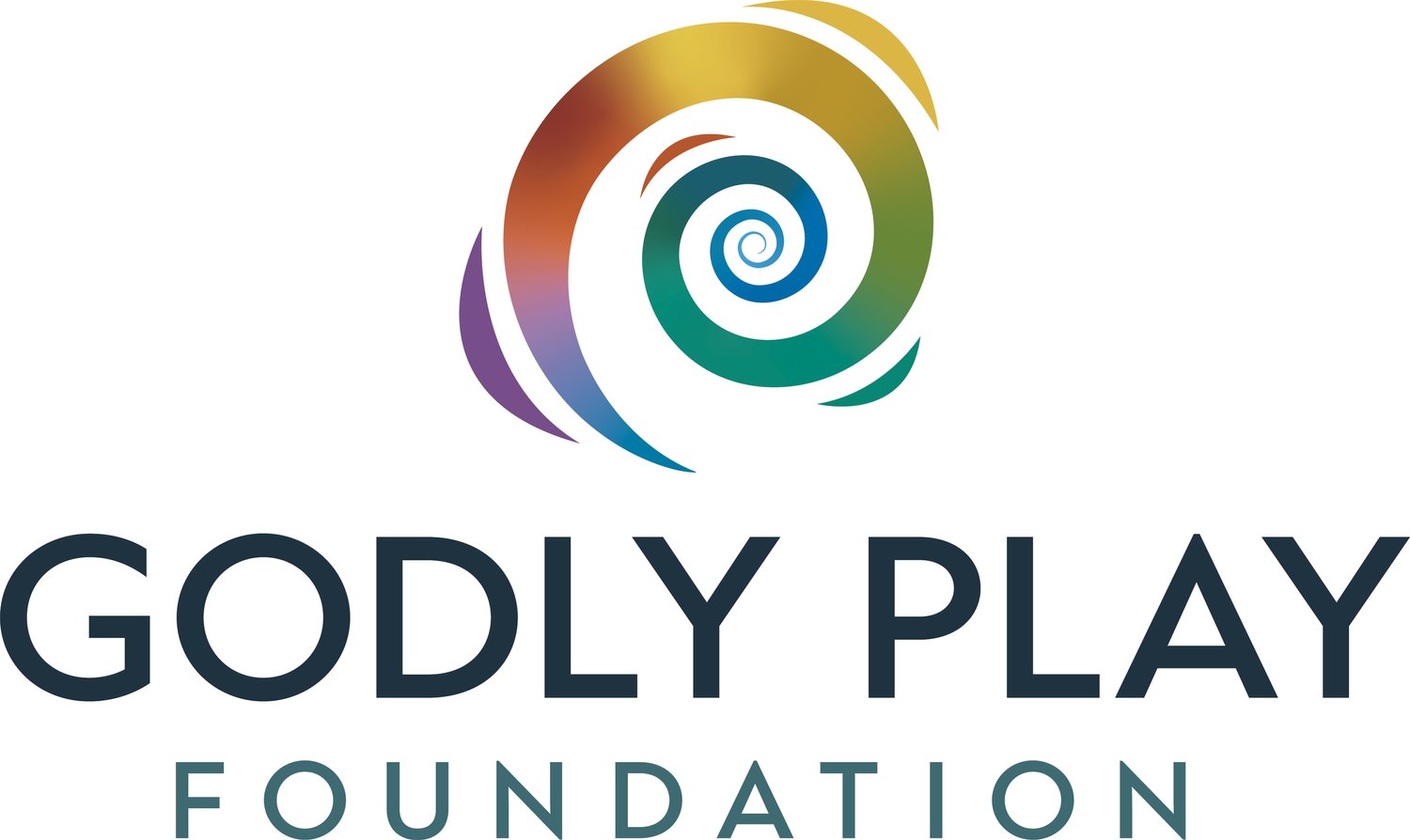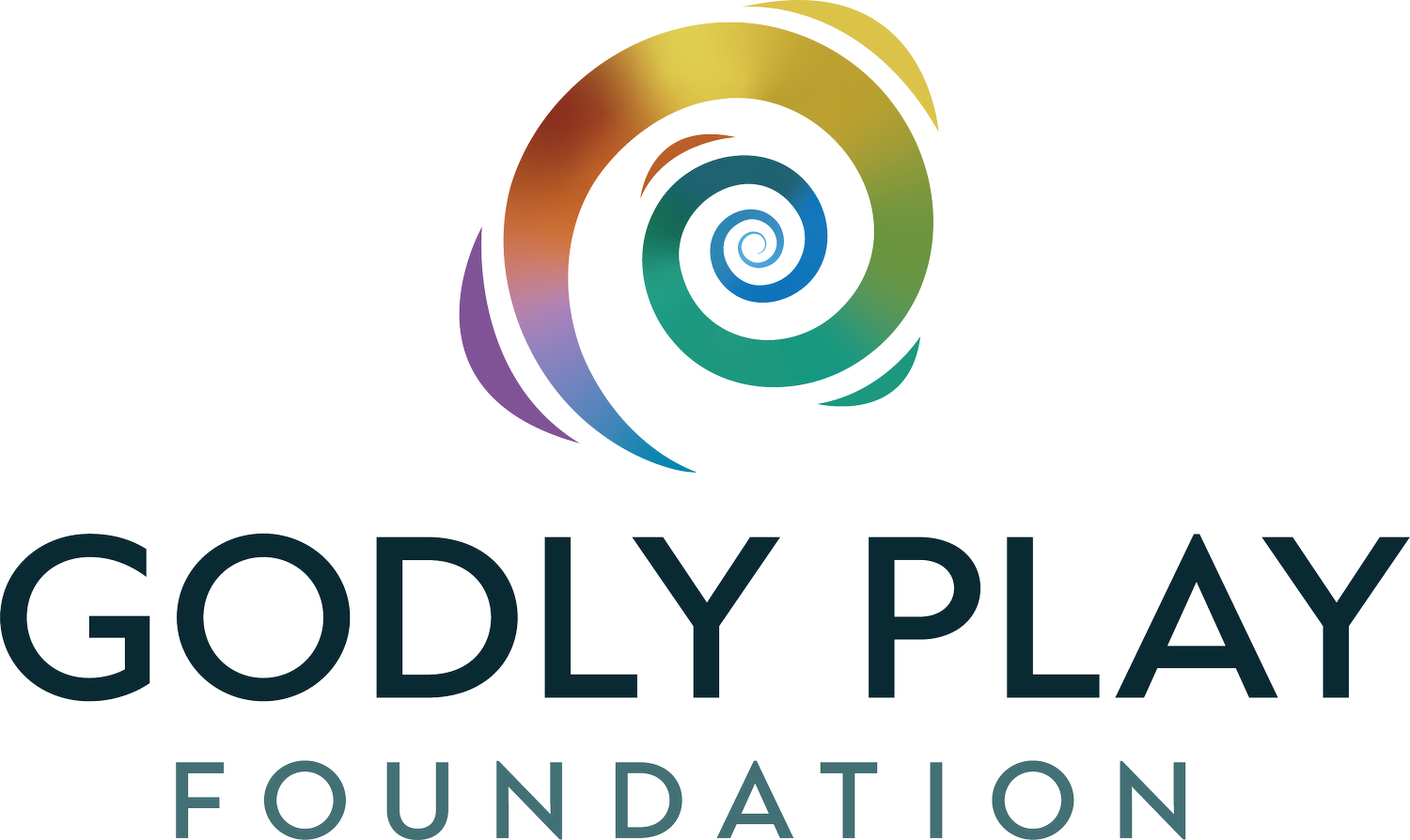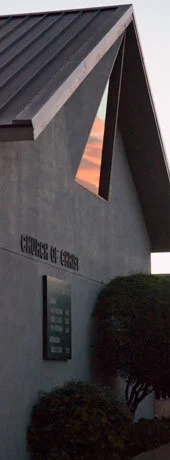Godly Play and the Refugee Child
Introduction
I attended my first official Godly Play workshop in 2013 at the Emmanuel Episcopal Church in San Angelo, Texas, and although it was just an introduction to the method, I was excited to finally attend a real Godly Play event! My husband and I were in discernment about a potential toddler adoption, and so I personally felt unsettled and nervous about the future. But I knew this introductory workshop was something I needed to do for me. After dinner in the church fellowship hall, we settled into a circle on the floor and introduced ourselves.
“Hi, I’m Beth, and I’m actually from South 11th and Willis Church of Christ in Abilene.” An elderly woman sitting nearby raised her eyebrows, and I heard her whisper in a somber tone, “The Lord help you!” I laughed, because I knew what she meant. The Churches of Christ are located in what scholars call the Restoration Movement, which began in the early 19th century. Some of the movement’s key “features” include: local autonomous churches, a shedding of all creeds, and a reliance on the Bible as the one and only revelation of God to humankind. There was to be no fancy high church liturgy and no instrumental music. One of its highest aspirations was to restore Christianity to what it would have looked like in the first century (as much as possible), as described in the New Testament.
So yeah, it seemed a little strange that a lady from a conservative, non-liturgical, and historically fundamentalist religious group was hanging out with liberal Episcopalians. I guess I’ve never been good at knowing where I belong.
I blame this on my mother (sorry, Mom). During the era of my childhood, most Church of Christ kids received a religious education that 1) ensured you knew the Bible, backwards and forwards, and 2) knew the basic doctrinal tenets of Church of Christ. My mother, however, took another approach, and my siblings and I got to be her guinea pigs. She had stumbled upon a book written in the 1970s by a trained Montessori teacher and Church of Christ member outlining how to create a complete Montessori-based religious education program appropriate for our denomination.
And so that’s what mom did. As she had no church budget, she handmade all the Montessori materials herself, sewed story illustrations to yards and yards of Pellon, and class began. Following God’s exhortation to the Israelites, she simply told the stories “into the ears of [her] children and grandchildren” (Exodus 10:2). There were no doctrinal keystones for us to remember and no moral platitudes . . . it was just the stories, the stories of the people of God. I didn’t know it then, but that offering would be transformational for me decades later.
So in 2013, I went to the Episcopal Church, simply to be trained to do the same.
Godly Play at Willis
In 2011, our church—South 11th and Willis Church of Christ—hired Kenyan refugee Domitien Nibizi to help the many newly arrived families from various African countries. Most of the refugees didn’t know English and needed help finding employment as well as some guidance on how to do life in the USA. About the same time, Godly Play was offered as part of a special children’s worship time on Sunday mornings. Over the years, however, the children’s program and our volunteer base had decreased dramatically due to family moves and an aging church.
My husband Ty and I are now the only ones left to offer Godly Play, which we now do in an hour-long format on Wednesday evenings. This little church is full of Christ-centered people. But we all know that it is sometimes hard to support or understand programs that seem “against the grain.” I often get the feeling that many in our congregation don’t understand why we put so much effort into this “Montessori” thing . . . it seems expensive, unfamiliar, and as one congregant said, “it doesn’t seem very entertaining for kids, and isn’t that what we need to attract young families to our church?” I’ll admit too, there are days when I’m tired, and I ask myself that same question . . . “and why am I doing this?” Of course, after every Godly Play session, I remember.
Our Godly Play Community
Our little community is small, but diverse. We have children from America, Congo, Burundi, and Sierra Leone. Most of the children from Africa are refugees, but did not come to the United States directly, having first spent months or years in other African countries as refugees. Our Godly Play circle also includes adopted children, bi-racial children, gifted and talented children, homeschooled children, dyslexic children, and medically fragile children. You name it, we’ve got it.
In his books, Quaker thinker Parker J. Palmer reminds us that children come into this world with a True Self, and it is the outside world that chips away at it, and tries to force us to be something other than what we were made to be. Through my work with children (as well as being a mother), I’ve learned what might seem obvious to some, although I rarely see churches practicing this view of childhood. That is, that children have personalities, strengths, weaknesses, preferences, lots of opinions, stories, theologies, deep ideas, wonderings, and sometimes, they have traumas. This has been most apparent with some of the African refugee children in our Godly Play circle. A few years ago, one boy who attended regularly struggled with deep sadness to the extent that it showed even in the way he carried himself. In their home country, his family had experienced extreme trauma during a bloody civil war, during which his mother was raped. Needless to say, the trauma was still real and raw, and it was apparent that moving to the US didn’t translate into a magical happy ending . . . his home life here was dysfunctional and difficult.
Recently, we began wondering together after the Parable of the Good Shepherd. I asked, “I wonder if you have ever had to go through a place of danger?” A young Congolese boy related his most terrifying moment, being kidnapped by relatives and taken across the state line before being apprehended by the police.
Of course, not all the children who come to our Godly Play circle have experienced trauma, and those who have aren’t necessarily African refugees. One little American girl fixates on food, always worried that she won’t get enough due to a period of infancy neglect. Another little boy hurts because his birthmother won’t communicate with him, and he wonders what he has done wrong.
The Trauma They Bring
In a 2015 interview with On Being’s Krista Tippett, Dr. Rachel Yehuda, a psychiatrist and neuroscientist, stated that trauma is “this overwhelming change that . . . resets and recalibrates multiple biologic systems in an enduring way.” I am not a therapist, a psychiatrist, or a scientist of any sort, but it is evident to me that many of the children in our Godly Play circle know these “overwhelming changes” that Yehuda studies.
More specifically, Yehuda works in the field of epigenetics, which is the study of “short term adaptations” that occur to our DNA because of a stressful or traumatic event a person has experienced. But according to Yehuda and other like-minded scientists, these adaptations can be passed on to subsequent generations, which has been documented through studies of the children of Holocaust survivors, expectant mothers inside the World Trade Center on 9/11, and rape victims. After listening to the interview, I began to wonder, “What about the children of parents who experienced sexual abuse as children themselves? What about the children of refugees from war-torn countries?”
These traumas come with the children to our circle every Wednesday night. What their mothers, fathers, grandparents, and they themselves have experienced, will impact them beyond what we can know right now. It can seem rather bleak and hopeless. What can we possibly do for these kids?
Safe Spaces and Stories: Are These Enough?
The only thing I know to do is to offer a safe space and to tell the stories of the people of God.
On the Center for Courage and Renewal’s website, there is a description of Parker J. Palmer’s “circle of trust” approach, in which a space is created for “shared exploration . . . where people can find safe space to nurture . . . integrity and the courage to act on it.” These Circle of Trust retreats are obviously meant for adults, but I see many similarities in the Godly Play circle for children. Many of the Palmer’s “touchstones for a safe and trustworthy space” are present in Godly Play. Some of these include: giving and receiving hospitality, being present with each other, refraining from demanding that others share, speaking your truth and respecting others’ truth, and abstaining from fixing someone.
These “circles of trust” are safe spaces that make way for stories, whether they are Biblical in origin or just other stories that help us identify who we are. In that same On Being interview with Dr. Yehuda, Tippett discusses how resilience also crosses generations. This often shows up within the container of religion. I agree, as I often catch glimpses of this resilience in Godly Play circles. Dr. Yehuda herself grew up in a Jewish community and stated that the “Jewish religion allows for and has a place for trauma. It is remembered at a set time and let go . . . it has boundaries and can’t control you.” While this isn’t the sole purpose of Godly Play, this is often what ends up happening when working with children from hard places. Our Godly Play time gives us that time to remember, wonder, and let go.
Dr. Yehuda noted that while trauma creates an “epigenetic force” whose immensity scientists are just now grasping, when it comes to people helping in practical ways, it is actually “our religious leaders [that] do a lot of this communal trauma work” (On Being interview). I know that when we gather together to hear the stories of the people of God, Godly Play practitioners are doing just this: retelling beautiful stories—and scary ones too. We’re wondering where we belong in those stories. It helps us all think about what it means to be a part of the people of God, even when it is not easy.
Probably the best way to illustrate how this has worked in our circle is through a story itself. Of course, the children all have their favorites . . . Kate could spend hours reconstructing the Tabernacle; Donnell loves the set up and reflect on “The Ten Best Ways”; and Lilly has baptized our doll so many times that I suspect that she has ministerial aspirations. But the story that provides the deepest connection for many of the refugee children is “The Exile and Return” in The Complete Guide to Godly Play, Volume 2.
Describing the Babylonian siege of Jerusalem and the people’s captivity in a foreign land, the script simply says: “They were in exile. They could not go home.”
So many refugees around the world know this exile. Some of them sit in our Godly Play circle, some probably sit in yours too. But God told the Israelites to tell the story over and over. The story of that uncertain time, when they left Egypt, the only place they had ever personally known, to walk out into wildness. God told them speak it “into the ears of your children and grandchildren… [and] you will [all] know that I am your God” (Exodus 10:2).
And so, that’s what we do. And in The Exile and Return, the storyteller says that “Slowly, God’s people began to understand that God was in this place, too. God’s presence came to them as they gathered to read the scriptures, to tell the old stories, and to pray . . . Now they knew God was in the strange and foreign land. Some stayed, because God was there, too.”
Conclusion
We all carry desolations inside of us, whether we know and name them or not. But the refugee children who are an integral part of our community remind me that just as these traumas can transcend generations, so can resilience through God’s love, which for the people of God often comes from the stories themselves. Eventually, we will all find ourselves in “strange and foreign lands.” New countries, broken relationships, unexpected challenges, addiction, loss of loved ones, personal illness, and more. But the act of remembering provides a powerful reminder that God is with us, wherever we are.
Beth Purcell lives in Abilene, Texas, with her husband Ty and two children Wade and Braylee. Throughout her days, she wears many hats, including Godly Play practitioner, homeschool teacher, member of Mel and the Junkyard Dogs (a quilting “gang”), and adjunct instructor at Abilene Christian University and Cisco College. She loves them all!






